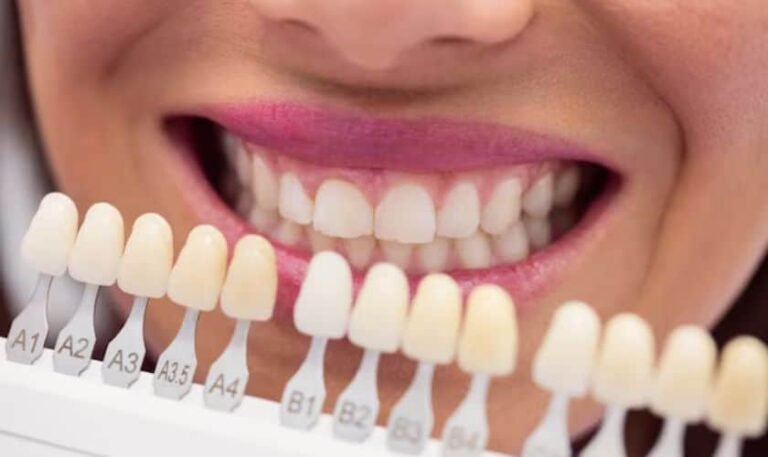A radiant, natural-looking smile is one of the most desirable features people aim for today. Thankfully, advances in dental science make this goal more achievable than ever before. Modern porcelain veneers combined with the integration of cutting-edge technology have revolutionized cosmetic dentistry, allowing practitioners to craft personalized smiles that fit seamlessly with each patient’s facial features and personality.
From digital scans to AI-driven design processes, this synergy is transforming how dental professionals plan, create, and place veneers with astonishing precision and artistry.
The Evolution of Porcelain Veneers
Porcelain veneers have long been one of the most popular solutions for correcting a range of dental issues, including chips, cracks, stains, and uneven spacing. Unlike traditional veneers that were often bulky or opaque, today’s veneers can be made ultra-thin and highly translucent, mimicking the light-reflecting properties of natural tooth enamel. This progress stems not only from improvements in porcelain materials but also from the integration of cutting-edge technology into every stage of veneer treatment.
In the past, creating veneers relied largely on manual impressions and analog design processes. Patients often had to wait weeks before receiving their final veneers, all while dealing with temporary restorations that rarely matched their final look. The process was more of an art than an exact science, relying heavily on the skill and experience of the dental team.
Going Digital: Scans and Smile Design
Thanks to new digital techniques, impressions are quicker, easier, and more accurate than traditional molds. Dentists can now use intraoral scanners to capture highly detailed 3D images of a patient’s mouth in a matter of minutes. These scans reveal a wealth of data, including tooth size, gum contour, occlusion, and even subtle variations in color and shape that inform the veneer design process.
With these digital scans as a foundation, dental professionals can craft a virtual smile makeover. Powerful software enables the precise customization of every veneer — shaping the final look with complete control over symmetry, length, and overall aesthetics. This is where the integration of cutting-edge technology truly shines, allowing patients to preview their future smiles long before a single veneer is ever fabricated.
The Role of Artificial Intelligence
Artificial intelligence (AI) is rapidly becoming an essential tool in the world of cosmetic dentistry. AI-powered design software can analyze a patient’s facial structure and create a suggested smile design that perfectly complements their unique features. This personalized touch ensures that porcelain veneers not only look beautiful but also feel like a natural part of the individual’s face.
More than just a time-saver, AI-driven processes minimize the margin for human error and enhance communication between dental technicians and practitioners. Dental professionals can fine-tune the AI-generated design in real time, adjusting shapes and colors to suit their patient’s preferences, personality, and lifestyle. The result? Every veneer is a one-of-a-kind work of art tailored to that specific smile.
CAD/CAM Milling and 3D Printing
Once the design is approved, computer-aided design and manufacturing (CAD/CAM) machines or 3D printers take over, producing veneers that fit perfectly. CAD/CAM milling machines craft the veneers from a single block of high-quality ceramic with micrometer precision. These machines eliminate inaccuracies and produce remarkably thin, durable porcelain veneersthat require minimal tooth preparation.
And with some offices offering chairside milling machines, patients can have their veneers produced and placed in a single visit — cutting what was once a multi-appointment process down to just a few hours.
Personalized Smile Trials
Beyond the design and fabrication, technology also enhances patient experience. Digital tools can produce a “trial smile,” allowing patients to see and even wear a temporary version of their veneers. Known as a mock-up or digital wax-up, this preview ensures that the final veneers will meet their expectations. It empowers patients to give feedback before committing to the final restorations and fosters a deeper collaboration between the dentist and the patient.
A Sustainable, Future-Focused Approach
The integration of cutting-edge technology into veneer treatment isn’t just about aesthetics — it also advances sustainability and oral health. Digital impressions reduce the need for disposable materials like impression trays and silicone. Plus, by enabling ultra-precise designs, technology minimizes the amount of tooth structure that must be removed, preserving the strength of each tooth for years to come.
The Future of Customized Smile Design
As technology continues to evolve, so will the possibilities for veneers and other cosmetic treatments. Imagine a future where a patient can “try on” different smile styles in augmented reality before making a choice, or where dentists use predictive AI to estimate the long-term wear and aesthetics of a particular veneer style. It’s an exciting era that bridges artistry and science in a way that past generations could only dream of.
By embracing these innovations, dental professionals can offer more than just a new smile — they can deliver a truly customized experience that feels personal and transformative. Whether someone is looking to correct minor imperfections or embark on a full smile makeover, porcelain veneers and the integration of cutting-edge technology have changed the game. It’s not just about creating perfect teeth; it’s about empowering patients to feel more confident and authentic in their appearance, one precisely tailored smile at a time.
